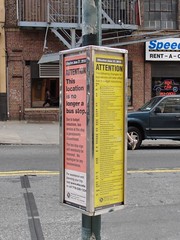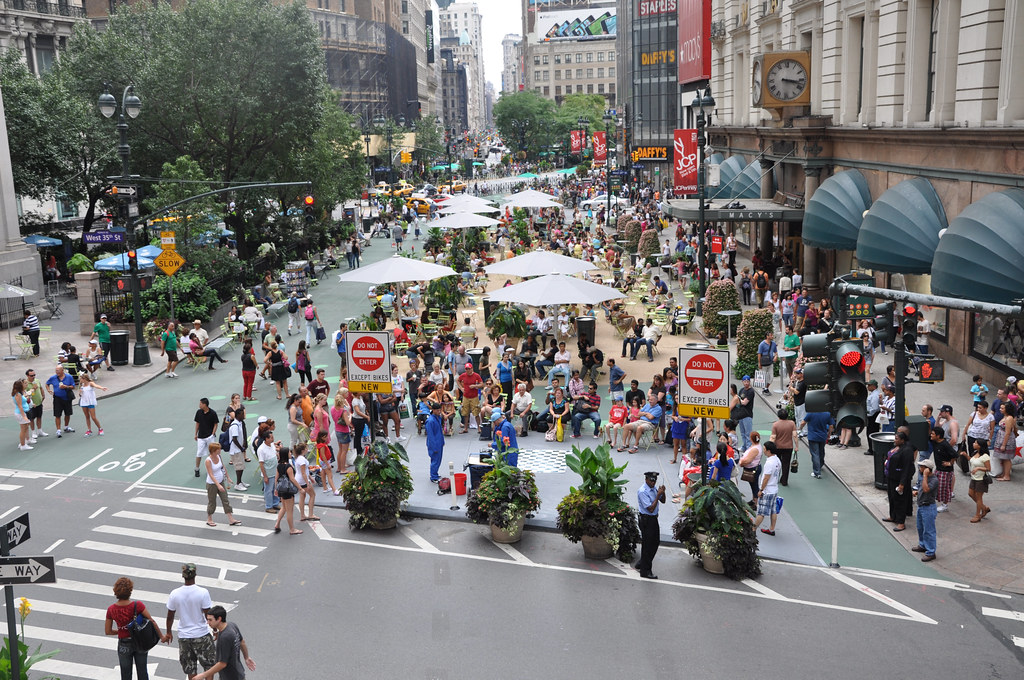 With June 28, the day on which New York City Transit will eliminate bus and subway service in order to save $93 million, coming ever closer, time for any rescue packages is running out. Yet, the United States Senate might just come through with the dollars the MTA — and other transit authorities across the nation — needs to avoid crippling service cuts or fare hikes.
With June 28, the day on which New York City Transit will eliminate bus and subway service in order to save $93 million, coming ever closer, time for any rescue packages is running out. Yet, the United States Senate might just come through with the dollars the MTA — and other transit authorities across the nation — needs to avoid crippling service cuts or fare hikes.
With support from the Amalgamated Transit Union and the Transport Workers Union, Senators Chuck Schumer, Kirsten Gillibrand and six other Democrats announced a federal bill that would provide $2 billion in operations aid for transit authorities that are currently exploring service cuts or fare hikes to close budget gaps. The MTA would be eligible for $275 million in assistance that would be good through September 2011.
“Commuters in New York are outraged by the fare hikes and service cuts that are being considered right now,” Gillibrand said. “This emergency funding is badly needed to maintain strong and affordable transit systems that get workers to work, students to school, and keep our economy moving.”
Streetsblog, its DC counterpart and the Tri-State Transportation Campaign all hailed the introduction of the bill as a major step toward a transit rescue. Yet, time remains as short. Writes Ben Fried at Streetsblog:
Before the MTA can decide how to allocate the funding, the bill has to pass Congress. The legislation could be attached as a rider to a war spending bill the Senate is expected to pass this week, said Liu. Or it could be attached to a small business tax credit bill the week of June 8. (The transit aid measures would also have to clear negotiations in conference committee.) Either option would presumably allow the MTA to avoid enacting service cuts scheduled to take effect at the end of June.
“It comes down to our region’s senators being the champions for this on the Senate floor,” said [TSTC’s Ya-Ting[ Liu, who praised [Connecticut Senator Christopher] Dodd and the Senate delegations from New York and New Jersey for sponsoring the bill. “We just know we have to keep up the public pressure.”
In New York City, this bill could not come soon enough, and I worry that its Eleventh Hour introduction may in fact be too late. The MTA has already implemented new schedules for its commuter rail lines and has phased out G train service to Forest Hills. Construction crews are working now to ready the Chrystie St. Cut for revenue service as the M will replace the V train along Sixth Ave., and signs mark bus stops across the city announcing service changes or outright suspensions. If the MTA is to reverse these cuts, the money must start flowing soon.
Of course, the other element of this rescue package we must consider is the way it absolves New York State of its responsibilities toward transit. If this important piece of legislation can pass the Senate quickly, it will be good only for the next 16 months. It isn’t designed to replace state funding schemes, and states shouldn’t begin to rely on the feds to bail out transit agencies every time a funding crisis arises. Perhaps the economy will rebound enough to provide the MTA with increased real estate taxes to avoid future armageddons, but a toll or congestion pricing scheme will have to be put in place sooner or later to help shore up the authority’s revenue streams.
Realistically, the MTA is planning to move forward with its cuts until the bill is ultimately approved. The authority, never one to waste words as it seemingly does with dollars, had only a brief statement to issue. “We support the bill,” spokesman Kevin Ortiz said, “and we hope it passes.”





 For the past few months, the MTA has been scrambling to close a budget gap of nearly $400 million. Each week, the authority unveils a new approach to management that will, in the words of Chair and CEO Jay Walder, help make every dollar count, and these measures have included
For the past few months, the MTA has been scrambling to close a budget gap of nearly $400 million. Each week, the authority unveils a new approach to management that will, in the words of Chair and CEO Jay Walder, help make every dollar count, and these measures have included 












